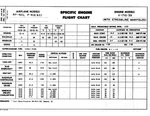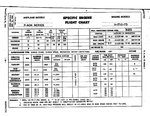Shortround6
Lieutenant General
The faster you spin the impeller the more air you get per unit of time which equals more power.
However you are also heating up the air more and there is a definite upper limit. Once the impeller tips exceed the speed of sound in the conditions that exist inside the supercharger shock waves are set up that disrupt the airflow.
However you are also heating up the air more and there is a definite upper limit. Once the impeller tips exceed the speed of sound in the conditions that exist inside the supercharger shock waves are set up that disrupt the airflow.


